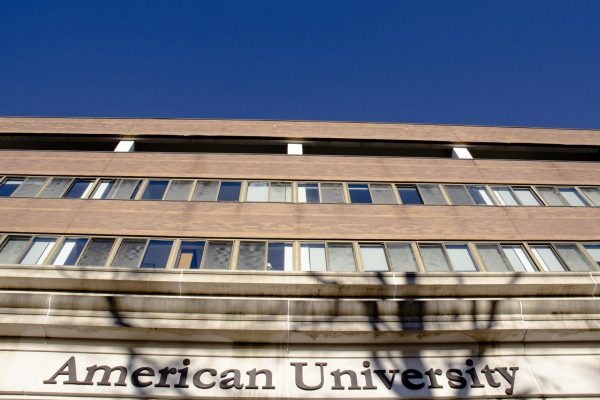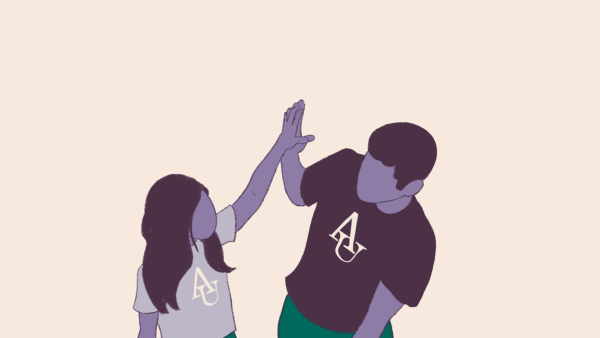Power to the Press: Student Journalists’ Influence
Despite the growing anti-journalism sentiments in the United States, American University student journalists feel like they are still being respected on campus by other students and by administrators, even in the face of some challenges.
In recent years, anti-journalism rhetoric has become rationalized and normalized. As shown by a poll by the Pew Research Center, political parties are divided on how effective media is, with only 34 percent of Democrats and 11 percent of Republicans believing that the news they receive is trustworthy.
A tense reporting environment has not been affecting only professional journalists. Student journalists often face harsh criticism and even censorship, according to the Student Press Law Center, a nonprofit organization that supports high school and collegiate journalism.
For AU’s own student media, student journalists have experienced reporting challenges.
In February, an AWOL writer, Noah Vehafric, was told to leave a Dining Advisory Board public meeting after he identified himself as a student journalist, according to a previous AWOL story. In May 2017, The Eagle, another on-campus University publication, reported that writers for The Blackprint were denied entry to cover the press conference that followed a racial incident when someone hung bananas in nooses from trees. An AU student, Tom Lynch, who was covering the protest for NBCWashington following that incident in May, was also removed from campus, according to a story by the Washingtonian.
Chris Young, AU’s student media advisor, had 10 years of reporting experience before taking the position that he describes as being the “liaison between students and university administration.”
Young said he takes his role very seriously in ensuring that the administration understands why student media are important.
“This is a school that prides itself on having a very robust, a very strong, communications division … specifically a journalism program,” Young said. “If we are going to tell prospective students that we have a very strong journalism program, [the university] should be huge advocates for empowering student media and helping them do the best job that they can.”
Sommer Dean, a staff attorney for the Student Press Law Center, provides student journalists with legal support and ensures that they experience their free press rights.
The hostile climate that journalists now face affects students. Dean said that while they must fight the “fake news” rhetoric, student journalists are also proving themselves as reputable reporters.
Dean said that over the past few years, the Southern Poverty Law Center has received lots of students asking for assistance when covering sexual assault, faculty misconduct, or student drug use.
“Administrations don’t want that covered,” Dean said. “So student journalists often face systemic censorship.”
Censorship at private universities is more pervasive because they are not being held to the same First Amendment standards as public universities, according to Dean. Censorship can come from administrations limiting student media funding or bullying reporters off a story, such as threatening students with academic probation.
AU has the right, as a private university, to censor student media.
“Luckily they choose not to do that,” Young said.
The Editors-in-Chief of The Blackprint, Jenna Caldwell and Alexis Arnold, said that they don’t think the university intentionally challenges their organization as a free press.
Both editors agreed that because the publication started recently in 2016, their stories are not yet taken seriously. Caldwell explained that the paper’s “focus on people of color makes [it] not seen as an official publication.”
When The Blackprint was barred from the 2017 press conference, Caldwell said that it was “administration saying we are not welcome.”
Arnold added that the administration does not respond to The Blackprint because they “assume it’s a hit job,” or that the story is only being written to attack the administration.
When The Blackprint continued to be vocal about the administration and campus events, then the AU administration began to include The Blackprint as a respectable student media outlet, Caldwell said.
Despite frustrations that both editors said the publication faces, Arnold said that they are very much able to be creative and publish stories about student experiences and administration without fear.
“Administration knows they don’t have jurisdiction over us,” Arnold said. “We’ve never been told, ‘You can’t publish that.’ The only thing that restrains us is our morals and ethics as journalists, and we do our best to hold ourselves to the highest standards.”
To maintain professional standards, Student Media Board Co-Chair Awais Ahmad said that student journalists need to maintain “trust with the university.”
However, Ahmad noted that trust has to be balanced with students’ roles to hold the administration accountable. “We don’t want to make enemies with the administration, but there are things we have to report on,” he said.
Ahmad described his position as a liaison between student media and other student organizations, like AU Student Government. He also described how AU’s administration is open to a free student press, even if they have the power to censor them as a private institution.
Ahmad said that because of the support student media gets from other students, the administration is less inclined to tell student journalists what can or can’t be published.
“Students trust student media for the information they know they can’t get anywhere else,” Ahmad said. He knows this by just scrolling through his Facebook wall and seeing his friends share articles from AWOL, the Blackprint or The Eagle.
In a climate where journalists are becoming less trusted, Ahmad said, “it’s a bigger responsibility that student media maintains objectivity and truthful reporting.”
Joseph Campbell, a professor in the School of Communications, said that it is not uncommon for organizations being approached by journalists to assume that the story is a “hit job.”
According to Young and his experience with student journalists, every year student media have trouble getting responses from the administration or can’t find sources who want to talk, for fear of being misconstrued or portrayed negatively.
Even for stories that may not paint a source in the most positive light, Young said that student journalists still need to be transparent with these sources so no one feels like they have been “blindsided.”
Student journalists understand the importance of facts and telling the truth, Young said, but it’s important for students to understand that the general public doesn’t really understand what reporting is.
“It’s important to teach the public on how good journalism is produced, how the sausage is made,” Young said.






